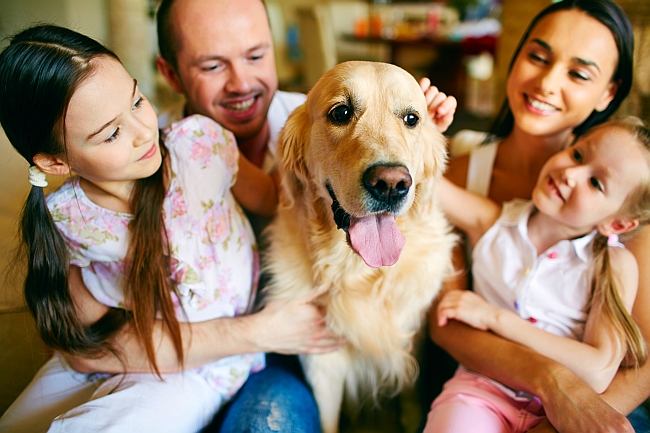
In homes with multiple children and multiple pets, it can feel like everything is hectic. While you are trying to devote the best care you can for your children, while also making sure your pets’ needs are met, the task can seem overwhelming. Here are some great tips about what you can do to bring balance in the home, by teaching the children to work together with the animals. This will bring order and harmony so that your household is thriving rather than drowning into oblivion. Check out these tips for how to have both happy kids and happy pets
- Create a routine: This will include all aspects of pet care, such as feeding, brushing, walking, playing and training. Helping your child stick to their routine will not only benefit the dog with consistency, but it will teach them to prioritize the “have-tos” on the list, so that they can enjoy the “get-tos.” By learning that they feed the dog, groom and walk the dog at specific times, the child will have added structure to his life, which will affect other areas. These kinds of disciplines are great for a child’s development as well as the dog’s.
- Get outside: Exercise is vital for canines and for children as well. When a child is pent up, or seems peevish, has overly-high energy or is showing difficulty sustaining a conversation, send him outside. This could include one of two variations.
- Play: The child might need some rough-and-tumble play time running around, wrestling with and playing with his furry pal. Maybe they could play catch with the Frisbee, go digging for bugs together, or climb the jungle gym at the neighborhood park. Relational connecting and physical contact like petting and playing in a hands-on way is such an important part of connect and development for the child, and affection for the dog.
- Walks: Have the child get the leash, a pocket full of treats (for encouraging the dog to “heel” on command) and go out for a long walk. Trusting the child with the dog will help them rise to the responsibility, and will allow them the chance to work on a few commands. The fresh air and exercise will be important for both pet and child.
- Schedule constructive quite time: All kids benefit from quite time, where they can curl up and read, cuddled up on the couch with their pets. This is a good “break” from the schedule.
- Too much to do? Hire out. If your child is up to his ears in after school projects, sports, and only has limited amount of time to spend with his dog, let that become his “fun time.” If the dog needs training, but neither your children nor you have the ability to invest in training, hire a professional to work with the dog. Once your pup is highly responsive, you can work with the trainer for a session and practice giving the commands, so that your dog will not lose his skill set and will get used to working with you. In some circumstances it would be better to hire a professional trainer so that the dog can develop, while allowing your child to devote time to his own projects and studies. That way, when your kids and pets play together, it is a chance for them both to have a blast and blow off steam together.
Note: Having pets not only would bring more balance to the child’s life, but the exposure to canine and feline germs actually makes the child less likely to suffer from indoor allergies (like mites, dust, and pet dander) as well as outdoor allergens (like grass or pollens) when they are older. They are less likely to have asthma, and less likely to be relationally disconnected, lonely or depressed. Having a healthy pet will greatly support having a healthy child.

